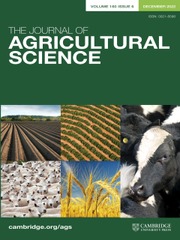No CrossRef data available.
Article contents
Does the use of whey protein in broiler chicken diets have a positive effect? Model-based meta-analysis
Published online by Cambridge University Press: 04 July 2025
Abstract
A meta-analysis was conducted to evaluate the effects of whey protein supplementation on growth performance, nutrient digestibility, blood parameters and carcase quality in broiler chickens. The dataset was compiled from studies published between 1964 and 2025, following the PICO framework, which included the following components: population = broiler chickens; intervention = various whey products (types of whey, inclusion methods and different inclusion levels); comparison = control versus treatment; and outcome = growth performance, nutrient digestibility, carcase traits, humoral immunity, antioxidant properties, intestinal morphology and microbiota composition. Overall, the inclusion of whey protein in broiler diets significantly improved average daily gain, feed intake, breast percentage and villus height (g’ > 0.500; P < 0.001). In conclusion, this meta-analysis highlights the strong potential of whey protein as an alternative protein source in poultry nutrition.
Information
- Type
- Modelling Animal Systems Research Paper
- Information
- Copyright
- © The Author(s), 2025. Published by Cambridge University Press


